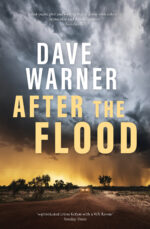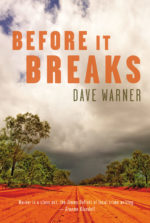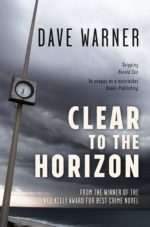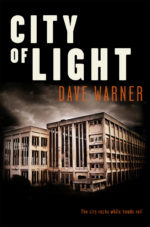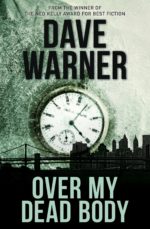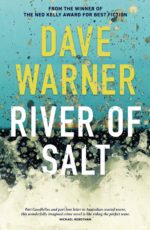Read this if you’ve ever wondered how a crime writer like Dave Warner gets from big idea to finished novel
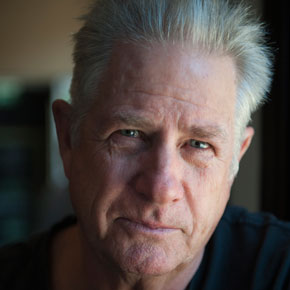
People ask me: Where do your ideas come from? Each of my books has a different genesis, but often the starting point is me saying,`I want to write a story that does X’. Sometimes the inspiration is no more than an image or scene that sparks in my brain. Or it might be a big central idea that makes me go, `Wow, that would be fun’, a huge twist that will blow people away.
Here are how three of my novels came about.
City of Light was my first novel, and at the time I didn’t know if I was capable of writing one. I loved reading crime fiction and felt that was my best shot, so how about a big crime novel set in my hometown? Perth in the 1970s was probably like Los Angeles in the 1940s, so why not take the template of LA mystery/detective novels and set it on familiar ground?

My initial story idea was, what if some well-intentioned cops took the law into their own hands and killed off a serial killer, only to find he wasn’t the real killer?
Interestingly, after I began writing, I saw that my planned main character didn’t serve my purpose and he became a secondary character to my new main character (Snowy Lane). Through the writing process, I got a bonus – the main character journey of an innocent young man being corrupted and then redeemed mirrored the corruption of an innocent city, and gave the story thematic heart.
So first came the desire of the kind of crime novel I wanted to write, then an initial `big idea’, then the characters to service the idea, then the theme.
Before It Breaks was different. Inspired by writers Henning Mankell and James Lee Burke, I had a desire to write a book where the location was in its every pore. After much thought, I decided the Kimberley should be my unique location. Then came the concept: the actions in a place as far removed from the Kimberley as conceivable, and many years prior, should be violently resolved in present day Broome. Cold 1970s Hamburg seemed the antithesis of Broome and gave me my second location.
Originally, I planned Snowy Lane as the detective, but quickly saw I needed a policeman with access to international networks, and hence created Dan Clement.
A detective novel must have strong plot – mystery, reversals, surprises and frustrating dead ends. Once I had Clement and the basic idea of a crime in Germany played out in Broome decades later, I knuckled down. Who would be the antagonist? Whose point of view should drive story?
Some of these elements came organically. But when I’d almost completed my first draft, I changed the antagonist.(In River of Salt, I changed the antagonist three times between conception and completion.)
The book’s theme is backgrounded in the idea that to heal and grow we must let go of our past life. However, none of the major characters actually achieve this.
So, the process was similar to City Of Light. First: I want to write this kind of book. Then, where will I set it? Next, what characters will best serve this story? Who will be my victim and why is he murdered here and now? Who will be my hero detective? Once more, in writing the characters, the theme evolved.
For After the Flood my starting point was `I don’t want to do what seventy-five per cent of Australian crime novels are currently doing’; usually a small town setting and a new crime with roots in the past. After all, I had used that model with Before It Breaks and partially in Clear To The Horizon, both featuring Dan Clement.
My last two novels had taken me away from Western Australia, and as much as I loved them, I missed Clement and his world and hoped my readers might too. I decided to make After the Flood the third Clement book, more of a ‘race against the clock’ action thriller. Though there is mystery, the emphasis is on suspense as the antagonist/s are revealed to the reader before Clement.
I had an image for a shocking killing that should occur early in the book – a naked body crucified to a road. Who might perpetrate such a grisly act? A serial killer, yes, but I had one of those in my previous book, Over My Dead Body. Somebody with deep inherent rage who felt betrayed could work. I began to merge the idea of an action thriller with an antagonist who felt great inner rage and wanted to create a maelstrom. What maelstrom? Well, blowing up a north-west gas train fitted.
Rather than delve into international terror factions, I wanted to keep the story domestic, personal. The theme – the emotional trauma of personal loss, whether by abandonment, death or divorce developed simultaneously with the characters and plot.
So this time the early murder scene in conjunction with what kind of story I wanted to write (or didn’t want to write) gave me everything I needed. As with my other books, I wound up adding an antagonist or two.
The theme of loss resonated deeply for me when my elderly South African cousin, with whom I regularly corresponded, died suddenly, leaving her husband of more than fifty years alone at the height of Covid in a town that has running water only every second day. When I have this emotional connection to a story the writing is more natural, powerful and the theme develops organically.
And so now it’s onto the next Big Idea. You never know when it might find you.



